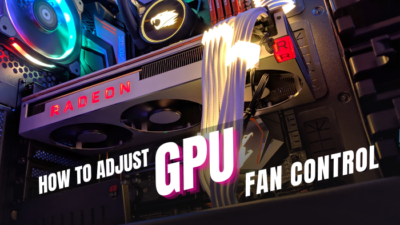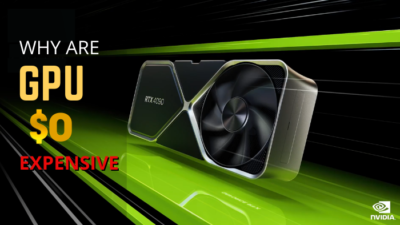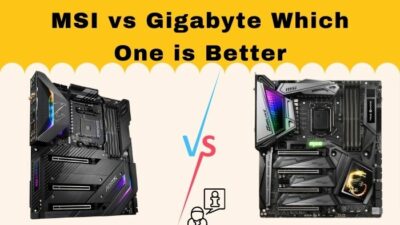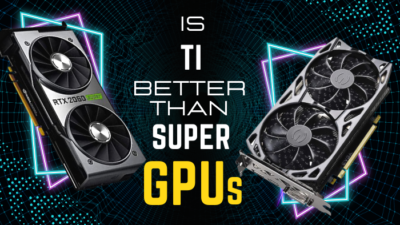Did you previously buy an APU instead of CPU+GPU to build your budget-friendly gaming PC? And now, when you’ve finally saved enough money to buy a decent graphics card, you’re wondering whether the dedicated GPU will work with the APU.
If that’s the case(or maybe you want to run both iGPU & dGPU together via AMD crossfire), you’re in the right place.
Go through this article as I’ve discussed everything you need to know about APU+GPU PC setup.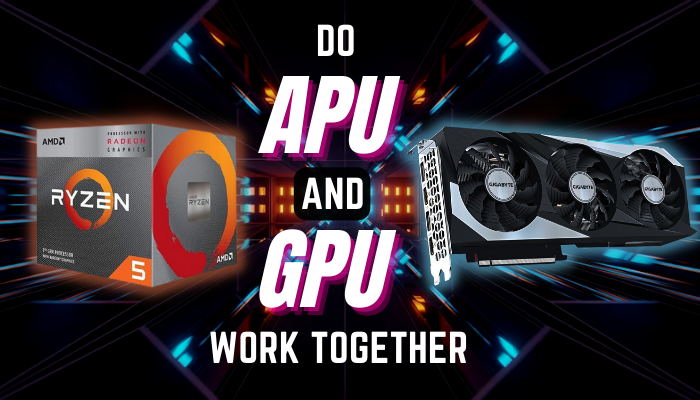
What’s the Difference Between APU and GPU?
An APU(Accelerated Processing Unit) is basically a CPU that accommodates an integrated graphics solution capable of playing games at a moderate fps & resolution. Meanwhile, a GPU(Graphics Processing Unit) is a specialized processor designed for accelerated graphics rendering.
It’s the basic definition difference between the two SoC. Let’s take a look at the technical differences.
APUs and GPUs are built differently for different purposes. GPUs are much more complex and capable of rendering intense graphical tasks. It comes with onboard video memory for frame buffers.
While APUs boast all the components as CPUs along with an integrated graphics processing chip in their die, but with less capability and some restrictions compared to typical graphics cards.
It’s really hard to summarize all the nit bits about iGPU vs dGPU. So, make sure to check out our in-depth discussion on integrated graphics vs dedicated graphics to know all about it.
So basically, an APU is a CPU with an integrated graphics chip capable of handling AAA titles at moderate settings. On the other hand, a GPU is a full-blown graphics processing chip with all the bells and whistles to play games and render 3D/visual workloads.
Bear in mind, there are certain noteworthy differences between an APU and a CPU.
Do APUs & Dedicated GPUs Work Together?
Yes, APU and GPU can work together. Additionally, AMD users can take advantage of Radeon Dual Graphics, an innovative multi-GPU technology that combines the APU & GPU’s rendering power. It delivers stunning visuals at a performance level that can’t be achieved with either device alone.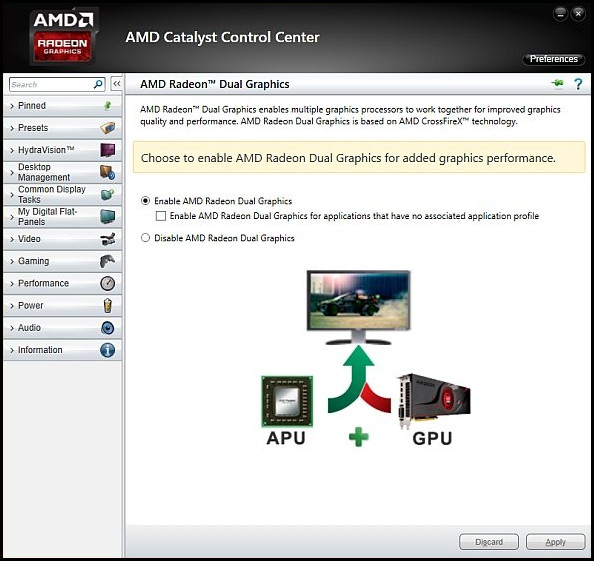
That being said, to answer properly, we need to understand the inquiring context of the question at hand. If you mean whether you can build an APU+GPU setup, then the answer is yes.
If you mean whether you can combine the iGPU & discrete GPUs together like SLI/NVLink or Crossfire, then it’s a bit complicated.
Suppose you have an AMD A10-7850K APU and Radeon R7 250 discrete graphics card. You can combine the A10-7850K’s iGPU with R7 250 using the Radeon Dual Graphics or Crossfire feature.
But when you’re using different brands, say, an Nvidia graphics card with an AMD APU, you won’t be able to use the said options anymore to make them work together. Connecting two GPUs from different brands requires different solutions.
Both Crossfire and Radeon Dual Graphics are AMD platform exclusive. But, not all APUs and AMD GPUs support such features.
Furthermore, AMD has stopped supporting Crossfire between their APUs and dGPUs. My guess is, it’s not worth the hassle as the performance output is simply not enough to justify the cost of multi-GPU setups. Not to mention the severe lack of optimization for such configs.
How to Use iGPU and GPU Together
As we’ve discussed above, it’s possible to use the AMD APUs and certain AMD Radeon GPUs together. There are two methods to do so; one is via AMD Crossfire, and the other one is the Radeon Dual Graphics feature. Below, I’ve discussed both methods in great detail.
1. AMD Crossfire
Radeon Graphics users can enable Crossfire to use an APU’s iGPU with selected discrete AMD GPUs for a multi-GPU setup. Keep in mind that only compatible 3D applications can utilize a multi-GPU system. Some unsupported apps might not run at all in such a configuration.
Anyway, follow these steps to use AMD iGPU and dedicated GPU together via Crossfire:
- Right-click on your desktop and select AMD Radeon Software from the context menu.
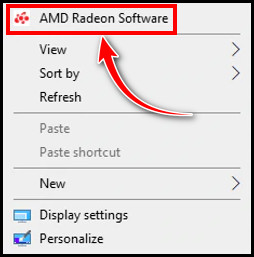
- Click on the gears icon and go to the Graphics tab.
- Expand the Advanced section and enable the toggle for AMD Crossfire.
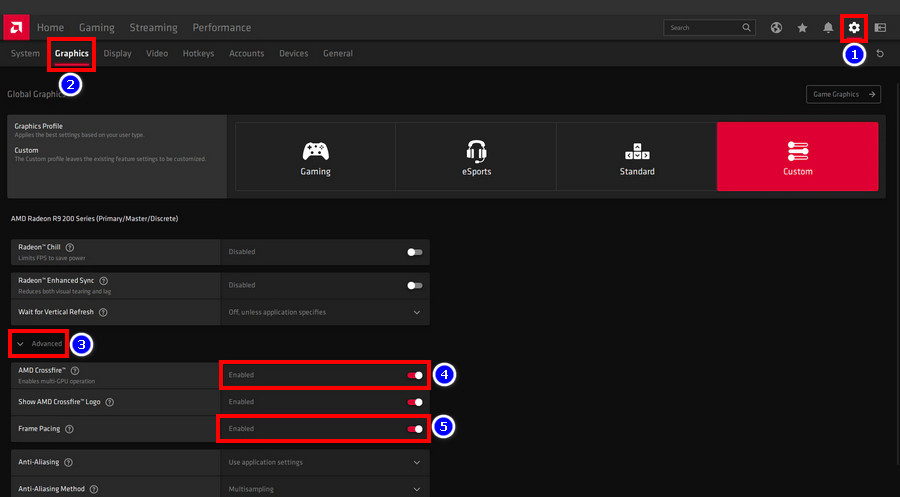
- Hit OK.
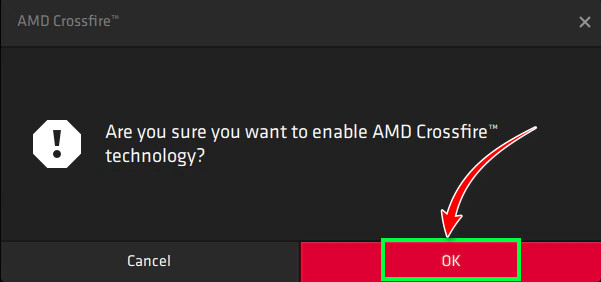
- Enable the toggle for Frame Pacing. It will distribute the frames evenly across multi-GPUs.
- Restart your PC.
Now when you launch a Crossfire compatible 3D application, it will combine the processing power of both iGPU and dGPU to render a given task.
You can also enable the Show AMD Crossfire Logo toggle. It will notify you when the Crossfire is supported and enabled while gaming by showing the logo at the top-right corner of the screen.
2. Radeon Dual Graphics
Radeon Dual Graphics is an AMD platform exclusive feature that allows users to combine the APU & GPU’s processing power together. To use this feature, you must enable certain options from the BIOS.
Here’s how to use the Radeon Dual Graphics feature:
- Reboot your computer and press the BIOS key to enter the BIOS menu.
Note: Your PC will show the BIOS key for a split second during boot. The button can differ based on your motherboard’s brand. But the most common ones are F10, F12, and Del. - Go to the Advanced tab and select NB Configuration.
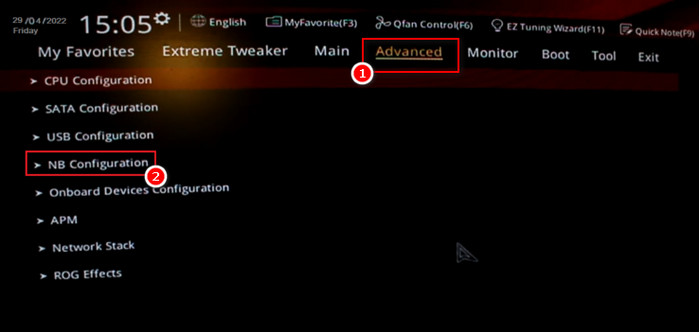
- Enable the IGFX Multi-Monitor option.
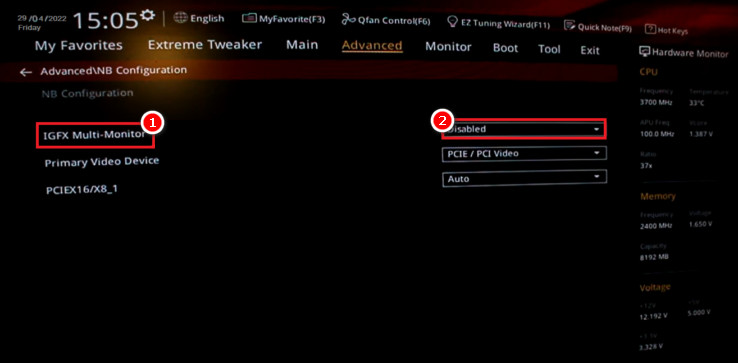
- Click on Integrated Graphics and select Force.
- Select UMA Frame Buffer Size and choose 2G.
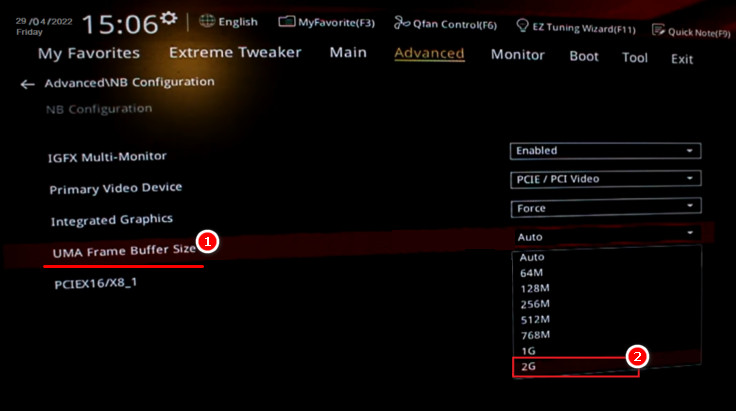
- Quite the BIOS menu by clicking on Save & Exit.
- Launch AMD Catalyst and select the Gaming section.
- Click on AMD Radeon Dual Graphics and select the Enable AMD Radeon Dual Graphics option.
Now, restart your computer, and your APU should be ready to roll with your dedicated graphics card. Remember, compatible 3D applications must run in exclusive full-screen mode to use this multi-GPU feature with DirectX 9,10,11 & OpenGL APIs.
Can I Use Nvidia GPU with AMD APU?
Despite being products of two completely different brands, you can use an Nvidia graphics card in a Ryzen APU build. But you won’t be able to use both iGPUs and dGPUs together like you can with certain Radeon dGPUs. It’s an ‘either or’ situation.
For example, you can install an RTX 3050 GPU to your Ryzen 5 5600G build and use it to play games without any issues. But you’ll have to use either the Nvidia GPU or the built-in iGPU to play those games.
You won’t be able to combine their processing power like you can with some AMD GPUs via Crossfire or Radeon Dual Graphics.
Frequently Asked Question
Is an APU or GPU good for gaming?
A dedicated GPU is better for gaming than an APU.
Does APU affect GPU performance?
An APU won’t affect a dedicated GPU’s performance unless you’re using the iGPU instead of dGPU to play a game.
Are APUs faster than GPUs?
No, current discrete graphics cards are way faster than APUs. Although, older low-end GPUs, such as GT 730, are much weaker than certain APUs like Ryzen 3 3400G.
Wrapping Things Up
In conclusion, Crossfire is basically dead now, and you can easily switch to dedicated graphics while playing games instead of using the APU’s integrated graphics. This pretty much summarizes the topic on hand.
Hopefully, this write-up has cleared out any confusion you had about using an APU+GPU PC setup. If there’s still any question lingering on your mind, spill the beans in the comment section below.
Ciao!

